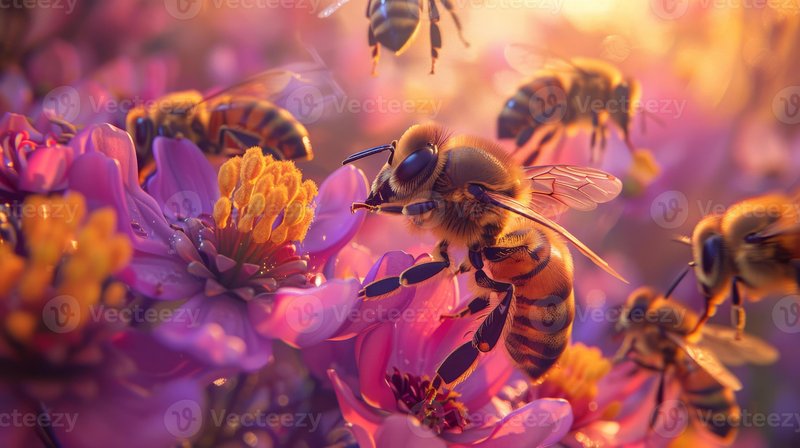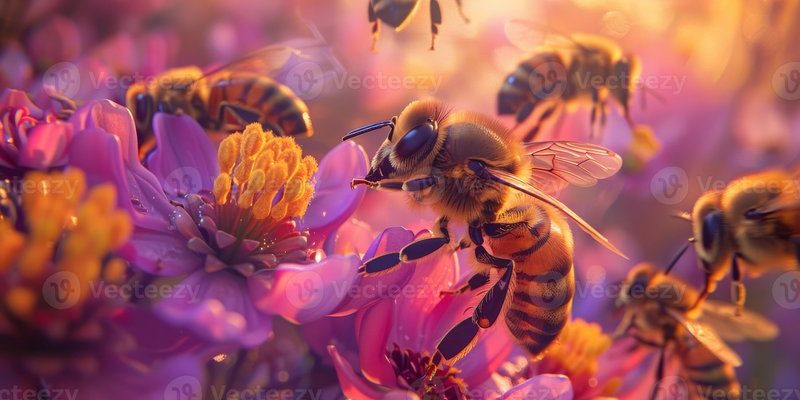
Let’s dive into what makes sweat bees so special. Just like a good friend who helps you out when you need it, sweat bees are essential for many flowering plants. They don’t just pollinate; they contribute to the overall health of the environment. So grab a coffee, and let’s chat about these fascinating little pollinators and the impact they have on our world.
What Are Sweat Bees?
Sweat bees, belonging to the family Halictidae, are among the many types of bees found around the globe. They’re called sweat bees because they’re often attracted to human perspiration, possibly for the salt. These bees come in various shapes and colors, but most are smaller than honeybees and can appear shiny with a metallic sheen.
You might notice them buzzing around your garden or when you’re out for a walk on a sunny day. They usually don’t sting unless provoked, making them pretty harmless. Their cozy, tiny size allows them to navigate through flowers easily, making them incredibly efficient pollinators. Here’s the thing: their role in pollination is crucial for both wild and cultivated plants.
The Importance of Pollination
Pollination is more than just a buzzword in the ecological world. It’s a vital process where pollen is transferred from the male part of a flower to the female part. This allows plants to reproduce and produce seeds. Without pollination, many of our favorite fruits, vegetables, and flowers wouldn’t exist.
In fact, about 75% of the world’s flowering plants depend on animal pollinators like sweat bees. These pollinators help maintain biodiversity and contribute to healthy ecosystems. Without them, we’d see a significant decline in plant populations, affecting food chains and ecosystems across the board. So, next time you see a little bee buzzing about, remember it’s playing an essential role in keeping our world blooming.
How Sweat Bees Pollinate
Sweat bees are diligent workers when it comes to pollination. They visit flowers in search of nectar, which is their main source of energy. While they feed, pollen gets stuck to their bodies. When they move to another flower, some of that pollen is transferred, leading to fertilization.
What’s particularly fascinating is that sweat bees are often solitary pollinators. Unlike honeybees, they don’t live in large colonies. Instead, each female sweat bee typically has her own nest, which can be in the ground or even in wood. This solitary lifestyle means they can pollinate a wide variety of plants without competing for resources. They’re like the freelancers of the bee world, covering lots of ground.
Why Sweat Bees Matter to Agriculture
You might be wondering what this means for agriculture. Well, sweat bees are some of the most effective pollinators for many crops. They help pollinate fruit trees, berries, and vegetables. In fact, some farmers are starting to recognize the value of these little bees and even encourage their presence on their farms.
This is super important because a healthy population of sweat bees can mean better crop yields. Imagine biting into a juicy strawberry that wouldn’t have grown without the help of these tiny pollinators—pretty amazing, right? Supporting sweat bee populations can directly impact the availability of food, making it an essential consideration for sustainable agriculture.
Threats to Sweat Bee Populations
Unfortunately, sweat bees face several threats today. Habitat loss due to urbanization, agriculture, and pesticide use is a significant issue. When flowers disappear, so do the sweat bees. Chemicals and pesticides can be deadly for them, making it harder for these essential creatures to survive and fulfill their pollination duties.
Additionally, climate change is altering flower blooming times and affecting the availability of food for these bees. If flowers bloom too early or too late, sweat bees might miss their window for pollination. This can lead to a decrease in food sources, not just for the bees but also for the animals and humans that depend on those plants.
How to Support Sweat Bees in Your Garden
Want to help our little buzzers? There are plenty of ways you can create a welcoming environment for sweat bees in your garden. Here are some friendly tips:
- Plant native flowers: Native plants are more attractive to local bees and provide essential nectar and pollen.
- Avoid pesticides: Reducing or eliminating chemical use will help protect sweat bees and other beneficial insects.
- Create nesting sites: Leave bare patches of soil, as many sweat bees nest in the ground. You can also provide small wood blocks with holes for cavity-nesting species.
- Provide water sources: A shallow dish with pebbles can offer a safe drinking spot for bees to hydrate.
By taking these steps, you’re not only helping sweat bees thrive but also contributing to a healthier ecosystem overall.
Sweat bees might be small, but their role in pollination is massive. These tiny pollinators work tirelessly to ensure our plants thrive and our food systems function. By understanding their importance and taking steps to protect them, we can contribute to a healthier planet.
Next time you spot a sweat bee in your garden, take a moment to appreciate all the hard work it does. After all, a thriving ecosystem relies on these little heroes. So, let’s give a round of applause to the sweat bee, and remember: every little effort counts in nurturing our environment!

